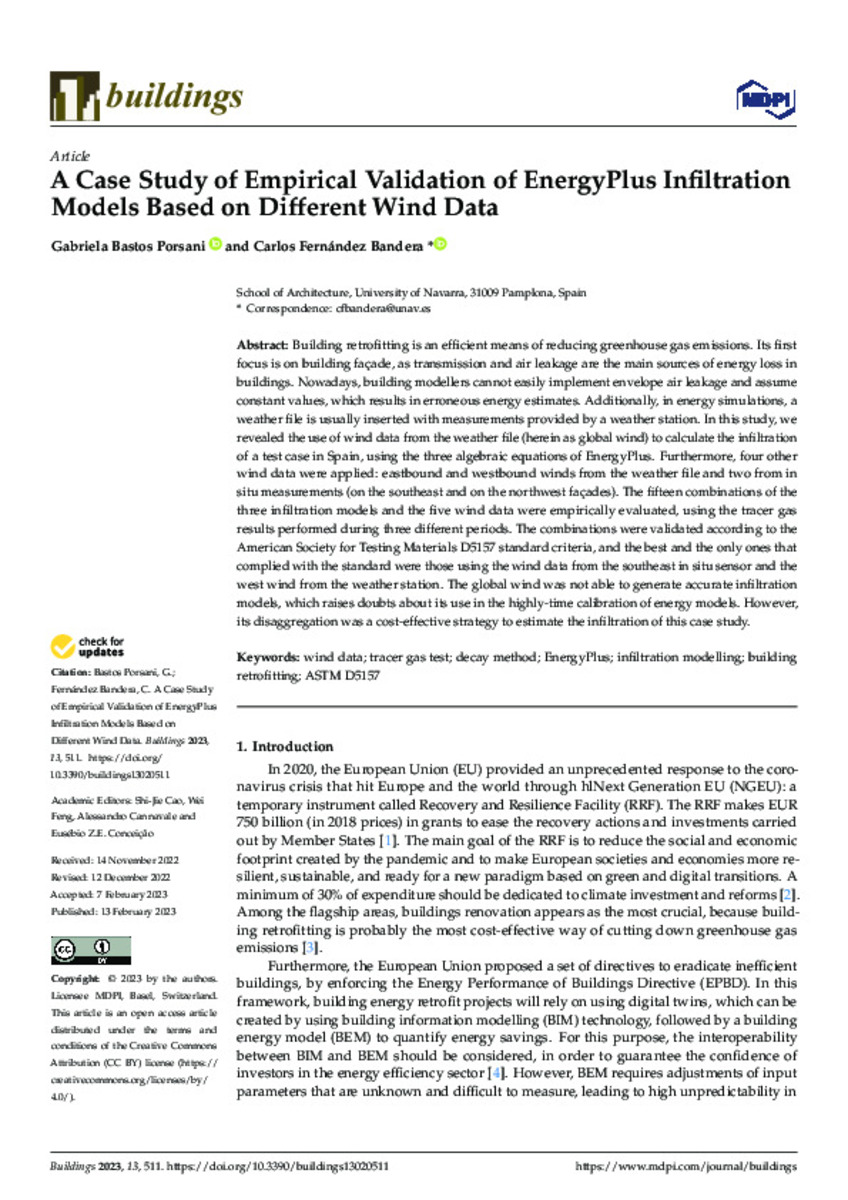A case study of empirical validation of EnergyPlus infiltration models based on different wind data
Palabras clave :
Wind data
Tracer gas test
Decay method
EnergyPlus
Infiltration modelling
Building retrofitting
ASTM D5157
Fecha de publicación :
2023
Nota:
This article is an open access article
distributed under the terms and
conditions of the Creative Commons
Attribution
Cita:
Bastos-Porsani, G. (Gabriela); Fernández-Bandera, C. (Carlos). "A case study of empirical validation of EnergyPlus infiltration models based on different wind data". Buildings. 13 (2), 2023, 511
Aparece en las colecciones:
Estadísticas e impacto
0 citas en

Los ítems de Dadun están protegidos por copyright, con todos los derechos reservados, a menos que se indique lo contrario.








